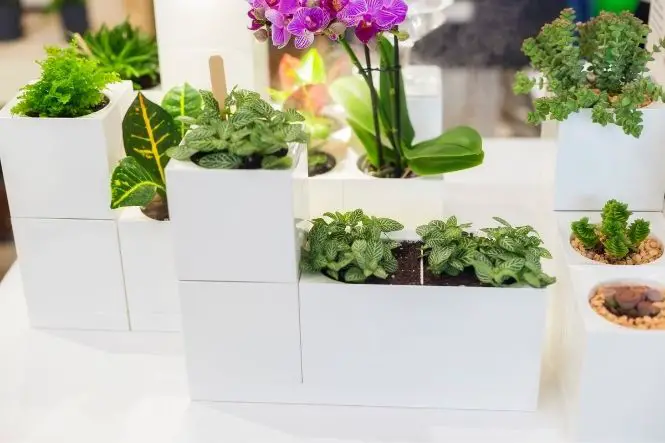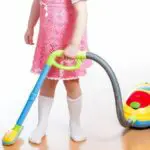Like animals and humans, plants need water, air and food to grow. They get all of these from their growing medium – the compost or soil that they grow in. This experiment looks at the effect that different growing mediums – sand, soil, compost, and bark – have on the plants, as well as what happens when plants get too much water.
Planting The Beans
Take five plastic cups and make drainage holes in four of them. Starting with the four with drainage holes, fill one with sand, one with soil from the garden, one with shredded bark and one with potting compost from the garden centre and label each one. Fill the cup without drainage holes with potting compost and label it ‘waterlogged’. Plant two or three bean seeds in each one. Water the pots gently, put them on a warm, bright windowsill and wait a week or two for the beans to germinate.
When the pot with potting compost and drainage holes starts to dry out, water them all with the same amount of water, and make sure that they all get the same amount of light.
Once the beans have started to sprout, give them sticks to climb up and measure them every day for a couple of weeks. See which plants grow the most quickly, and check which plants look the healthiest – are the leaves all the same colour?
What Has Happened?
The beans planted in the potting compost in the cup with drainage holes are likely to be the tallest and look the healthiest, with large dark green leaves, because potting compost drains well, so that the plants don’t become waterlogged, but holds enough moisture to keep the plants healthy. It also has all the nutrients that the plants need.
The other plants may not do as well. Garden soil tends to get waterlogged and compacts in the pot, so the roots may have too much water, which can make them rot, and may also not have enough air. Some soils don’t have enough nutrients for the plants, so they might start well, but begin to look a bit sickly after a while.
Sand drains very quickly, so the bean plants may not get enough water. It also doesn’t contain many nutrients. Because of this, bean plants grown in sand can be short and stunted, and might be pale. Shredded bark also drains quickly and is low in nutrients, so these plants may not do as well.
The waterlogged plants will struggle to grow – they have plenty of water and nutrients, but the roots need oxygen as well, and little will get to their roots. If they germinate at all, they are likely to rot and die after a while.
What Does This Mean?
The roots of plants take nutrients and water from the soil for the plant. The roots also need oxygen from the air in order to remain healthy. While different plants do need different growing conditions, it’s generally important to make sure that they have all of these in order to grow well and produce fruit, vegetables, flowers, seeds and grains.




